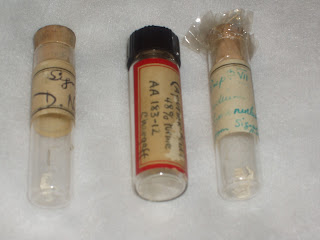The artefacts within the combined papers of the Maurice Wilkins and Biophysics collection include some of the most striking items in our holdings. Correspondence may have warmth and wit and the experimental notebooks may actually give the how and why but nothing beats the sheer visual punch of the DNA wire model or a X-ray diffraction camera. The artefacts are all the more impressive due to the diversity that the collection holds. Highlights include: original DNA fibres supplied by the Swiss biochemist, Rudolf Signer, which were the main source of DNA used in the X-ray diffraction experiments by Rosalind Franklin and Raymond Gosling; several X-ray diffraction cameras including the micro camera used to obtain "Photo 51", the picture of B structure DNA that so sharply showed a helical structure of DNA; DNA models and diagrams that the Biophysics Unit used to construct and refine more detailed models of DNA, with the pride and joy being the several metre long roll of the DNA molecular model ceremoniously nicknamed the "DNA toilet paper". These are a few of our favourite things and they are joined by many other items that directly relate to DNA and previous microscopic research carried out on the subject.




No comments:
Post a Comment